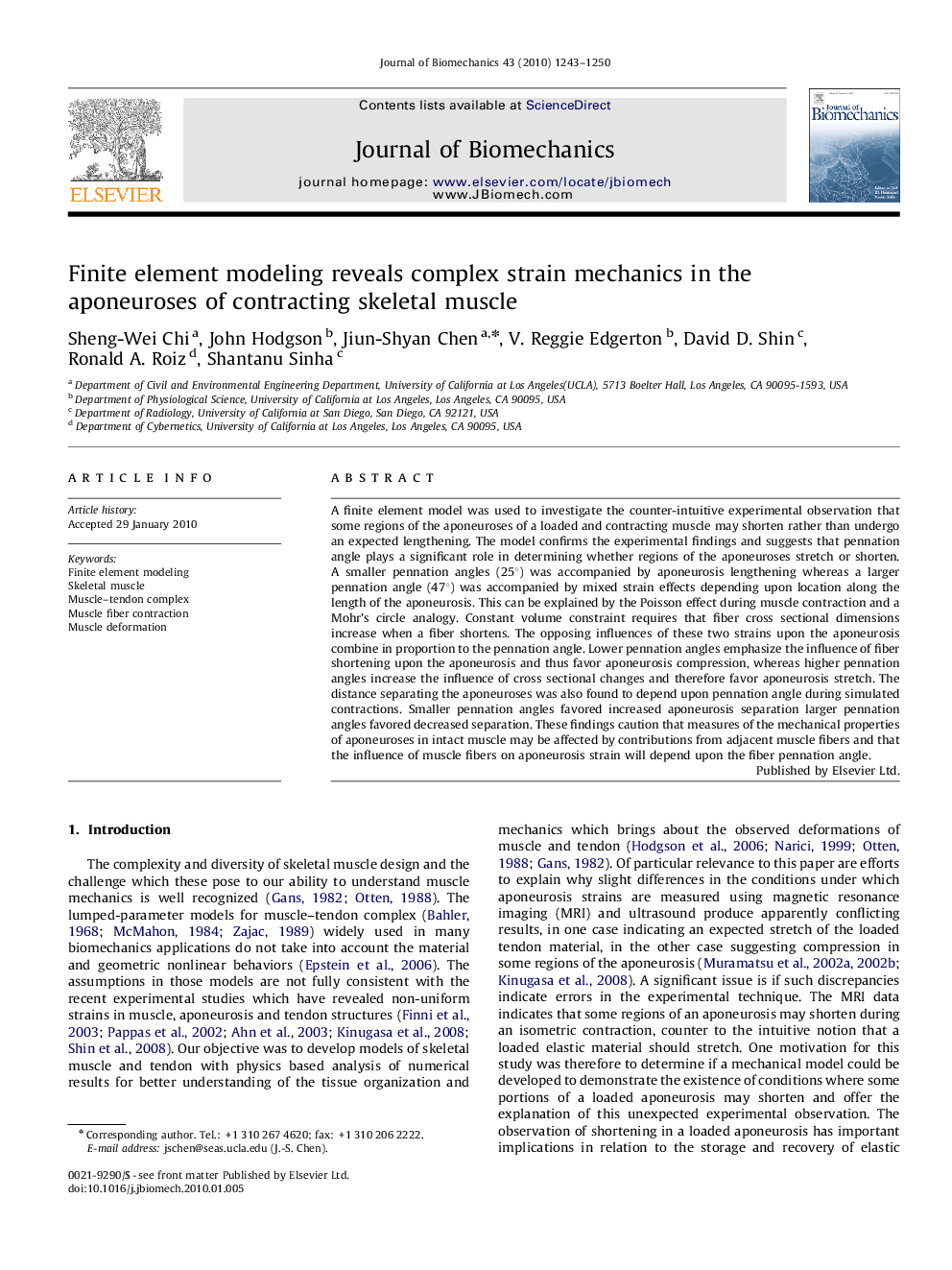| Article ID | Journal | Published Year | Pages | File Type |
|---|---|---|---|---|
| 873653 | Journal of Biomechanics | 2010 | 8 Pages |
A finite element model was used to investigate the counter-intuitive experimental observation that some regions of the aponeuroses of a loaded and contracting muscle may shorten rather than undergo an expected lengthening. The model confirms the experimental findings and suggests that pennation angle plays a significant role in determining whether regions of the aponeuroses stretch or shorten. A smaller pennation angles (25°) was accompanied by aponeurosis lengthening whereas a larger pennation angle (47°) was accompanied by mixed strain effects depending upon location along the length of the aponeurosis. This can be explained by the Poisson effect during muscle contraction and a Mohr’s circle analogy. Constant volume constraint requires that fiber cross sectional dimensions increase when a fiber shortens. The opposing influences of these two strains upon the aponeurosis combine in proportion to the pennation angle. Lower pennation angles emphasize the influence of fiber shortening upon the aponeurosis and thus favor aponeurosis compression, whereas higher pennation angles increase the influence of cross sectional changes and therefore favor aponeurosis stretch. The distance separating the aponeuroses was also found to depend upon pennation angle during simulated contractions. Smaller pennation angles favored increased aponeurosis separation larger pennation angles favored decreased separation. These findings caution that measures of the mechanical properties of aponeuroses in intact muscle may be affected by contributions from adjacent muscle fibers and that the influence of muscle fibers on aponeurosis strain will depend upon the fiber pennation angle.
